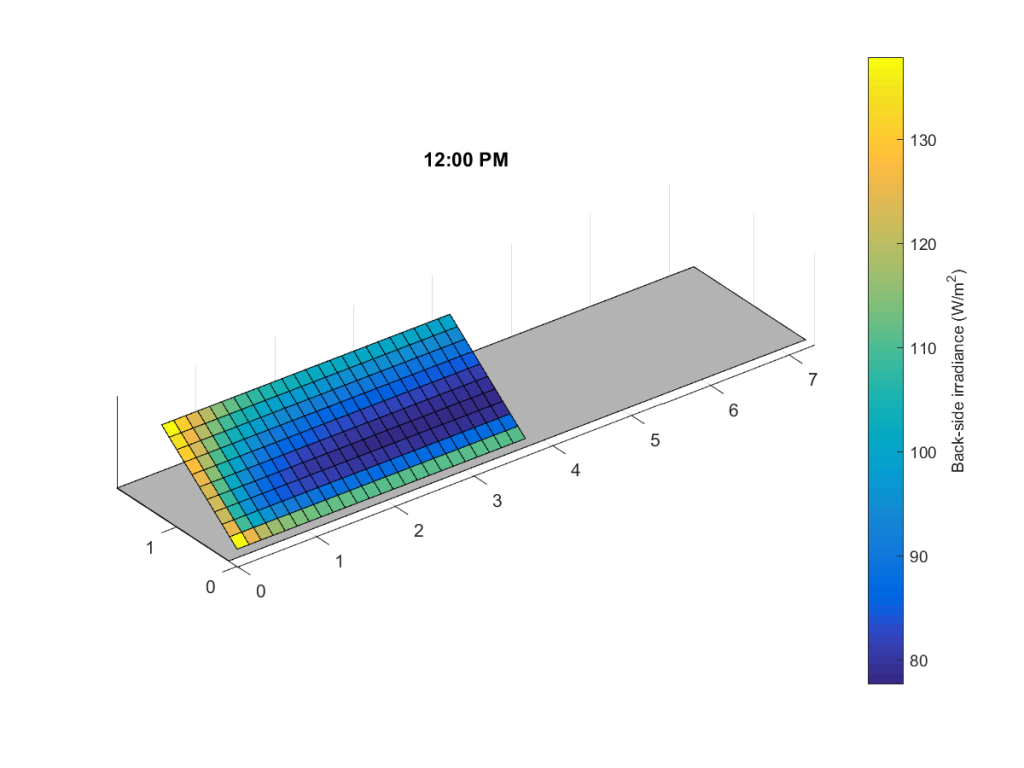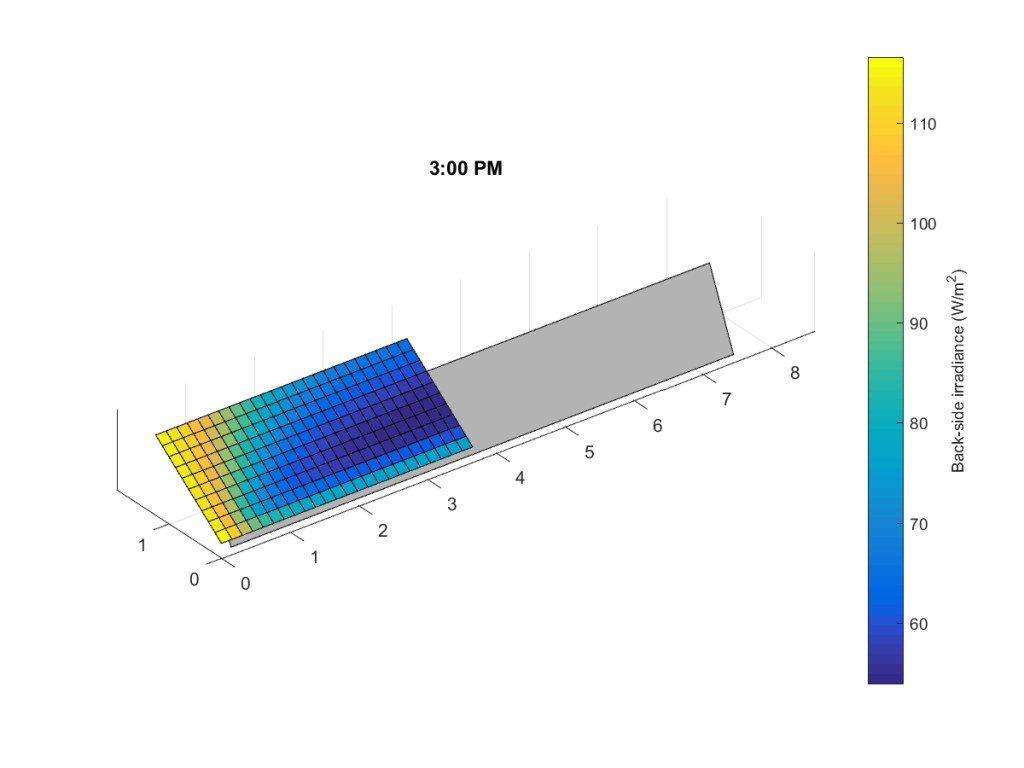Sandia has coded a view factor model that estimates back-side irradiance across a row of bifacial modules, accounting for the row’s shadow on the ground and assuming an isotropic model for sky diffuse irradiance. Figure 1 and Figure 2 show the modeled variation in back-side irradiance by cell at noon and 3 PM, respectively, for the left 4 modules in a single row of 8 modules at a tilt of 35° on a September clear day in Albuquerque, NM. As the array shadow extends to the east (right), the cells on the west (left) edge of the array receive increasing back-side irradiance from the greater sunlit area on the ground behind those cells.
Sandia’s Matlab code is here: Sandia_Bifacial-PV_View-Factor-code_0.2-1.zip (8404 downloads )


Reference: Yusufoglu, U.A., et al., Simulation of Energy Production by Bifacial Modules with Revision of Ground Reflection. Energy Procedia, 2014. 55: p. 389-395.